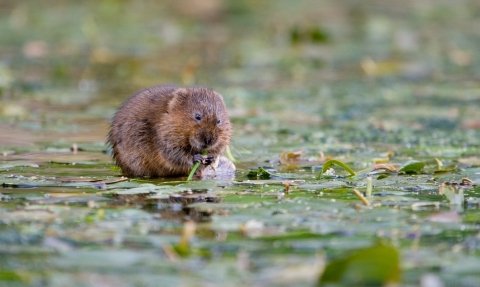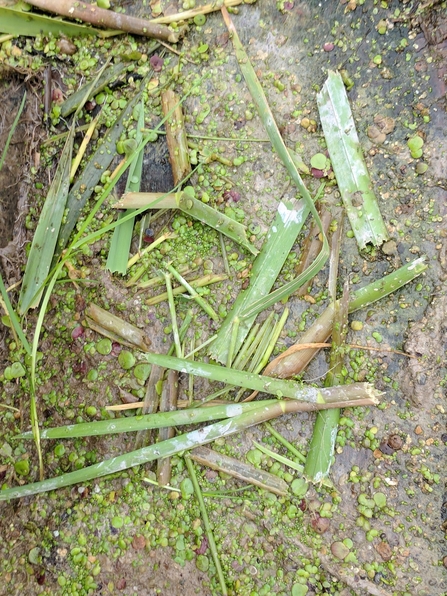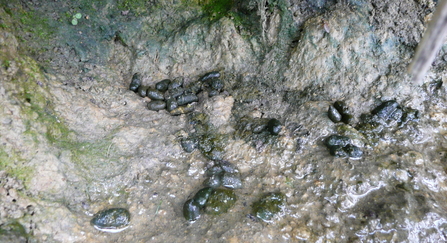
WildNet - Tom Marshall
Water Voles on the Gwent Levels
In 2012, we successfully re-introduced water voles back onto Magor Marsh nature reserve, on the Gwent Levels, where they are still thriving today.
Water voles have the unfortunate claim to fame of being the fastest declining mammal in the UK.
Water voles are a native species and until the 1950s, they flourished in Wales. Sadly, numbers have been dramatically declining, as they were impacted by habitat loss and preyed on by a non-native species, the American mink. This combination has meant up to 90 per cent of the UK's water vole population, have become extinct during the past few decades.
They may not be the most conspicuous of our wetland wildlife but they play a vital role in shaping their habitats for the benefit of many other species.
What do water voles need to thrive?
At twelve inches long (including their furry tail), water voles are our largest vole species and they need a lot of food and space to thrive. They eat over 200 different kinds of plants and consume up to 80% of their body weight each day.They live in burrows that they excavate in the banks of waterways and don’t stray far from the water so need a good variety and cover of plants within easy reach of the water's edge. They are very territorial and can defend territories up to 200 metres long so they need a lot of space to spread out in.
A future in the Gwent Levels
To secure their future on the Gwent Levels, we need to ensure the water vole population has room to grow, and for that we need to work on a landscape-scale.
With funding from HLF, the Living Levels Partnership has been enabling us to work with landowners to restore key wetland habitats across the Levels to give them, along with many others, a home to thrive in. And our new Nature Reserve at Bridewell Common, purchased in 2019 thanks to the generous support of our members, a legacy from Pat Gorvin and grant funding, will provide further protected habitat.
How to spot a Water Vole
Even as their numbers increase, it’s still rare to actually see a water vole. The best time to look for them is in the summer months when the young are out and about but you are more likely to hear them than see them. Listen out for them munching on plants or as they enter the water with a loud ‘plop’.
The key to looking for water voles is to look out for signs of their presence and then keep very still and quiet and with patience, and luck, you may see one.
Here are some of the signs to look out for:
Footprints

WildNet - Faye Davies
You may spot their delicate star-shaped footprints in muddy banks.
Burrows
Lowri Watkins
Look out for a tennis ball-sized hole in the bank surrounded by trimmed vegetation, sometimes with neat ‘lawns’ of grass outside.
Food remains

Lowri Watkins
You may find piles of nibbled plant stems near the water's edge. They bite them off at 45 degree angle and then hold them in their front paws to eat.
Latrines

WildNet - Karen Lloyd
Water voles use latrines to help mark their territory so look out for a pile of small, odour-less droppings along the banks.


